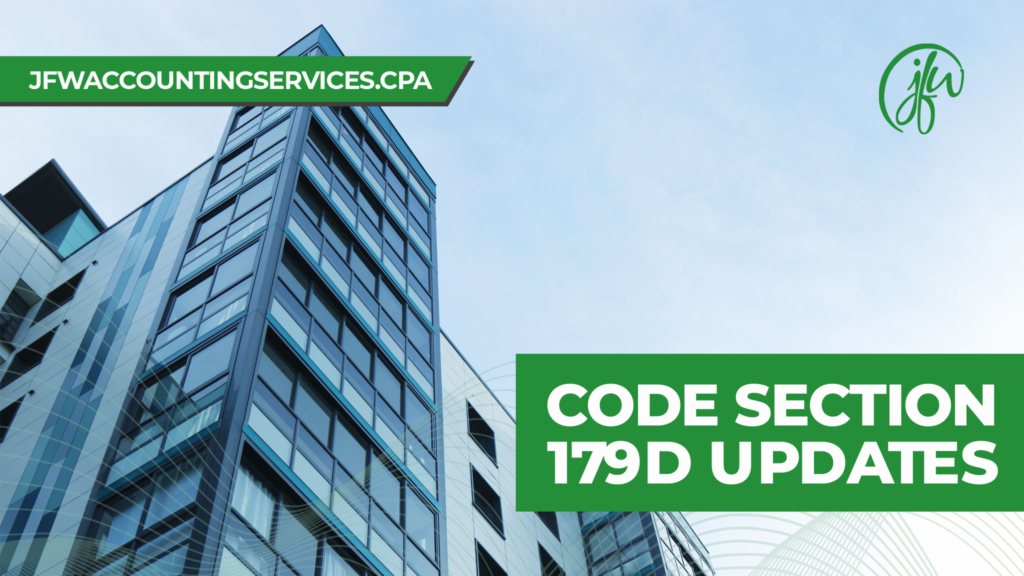Does your nonprofit plan on remodeling or constructing a new building? Taking advantage of your tax-exempt status doesn’t mean that you can’t leverage tax code provisions, one of which is Section 179D. In this guide, we will outline code section 179D updates following the passage of the Inflation Reduction Act and how your nonprofit can utilize this provision.
What is Section 179D?
Section 179D was originally introduced into the tax code in 2005 as a temporary tax incentive for commercial buildings that implement energy-efficient components. Throughout the past two decades, Congress has extended this tax provision until it lapsed in 2016. However, the Consolidated Appropriations Act permanently established this provision in the tax code.
IRC Section 179 is a special depreciation option that businesses can take to reduce taxable income. Section 179D is an additional incentive for energy-efficient commercial building components.
What are the Code Section 179D Updates?
Before the passage of the 2022 Inflation Reduction Act, buildings had to reduce energy usage by 50% to be eligible for Section 179D. Now, this threshold is reduced to 25% for certain items. Additionally, the base deduction amount did decrease to between $0.50 and $5.00 per square foot. The new deduction amounts include:
- $0.50 per square foot for an overall 25% reduction in energy consumption, plus $0.02 for each percent above 25%.
- $1.00 per square foot for a 50% reduction in energy consumption.
- $2.50 per square foot for an overall 25% reduction in energy consumption, plus prevailing wage and apprenticeship hours.
- $5.00 per square foot for an overall 50% reduction in energy consumption, plus prevailing wage and apprenticeship hours.
Prevailing wage and apprenticeship hours are one of the main provisions altered by the Inflation Reduction Act. Both general and subcontractors must meet minimum wage requirements from the date construction begins to five years after the building is placed in service to qualify for a higher square foot deduction.
How Does Section 179D Apply to Nonprofits?
Under Section 179D, nonprofits that own a commercial building can pass the tax deduction through an “Allocation Letter.” Since nonprofits don’t have taxable income they can apply Section 179D to, they are allowed to pass down the deduction to a taxpaying entity, such as the architect or engineer. In return, the overall contract price is reduced.
Prior to the Inflation Reduction Act, only government entities could benefit from pass-through elections. Nonprofits are now included. This makes it important to consider adding energy-efficient improvements and prevailing wage requirements to leverage contract price savings. Energy-efficient facilities also result in lower maintenance costs going forward, such as in the form of lower heat, electricity, and water bills.
Summary
If your nonprofit is considering remodeling or constructing a new facility, energy-efficient upgrades should be discussed. To go over the specifics of Section 179D and other financial strategies, reach out to one of our team members at JFW Accounting today.

Jo-Anne Williams Barnes, is a Certified Public Accountant (CPA) and Chartered Global Management Accountant (CGMA) holding a Master’s of Science in Accounting (MSA) and a Master’s in Business Administration (MBA). Additionally, she holds a Bachelor of Science (BS) in Accounting from the University of Baltimore and is a seasoned accounting professional with several years of experience in the field of managing financial records for non-profits, small, medium, and large businesses. Jo-Anne is a certified Sage Intacct Accounting and Implementation Specialist, a certified QuickBooks ProAdvisor, an AICPA Not-for-Profit Certificate II holder, and Standard for Excellence Licensed Consultant. Additionally, Jo-Anne is a member of American Institute of Certified Public Accountant (AICPA), Maryland Association of Certified Public Accountants (MACPA), and Greater Washington Society of Certified Public Accountants (GWSCPA) where she continues to keep abreast on the latest industry trends and changes.

